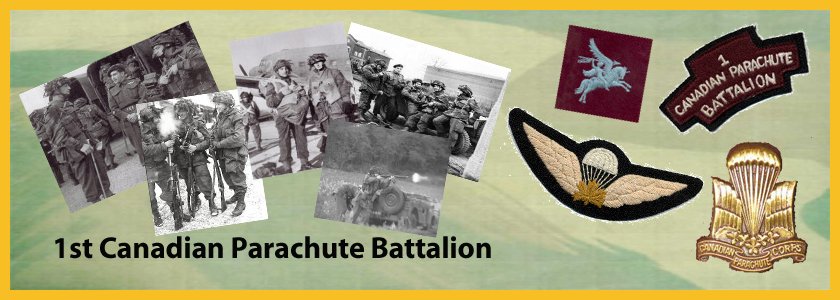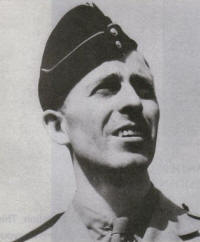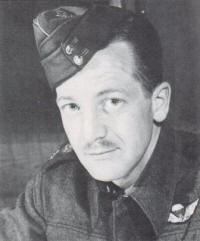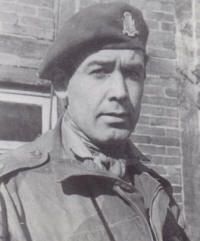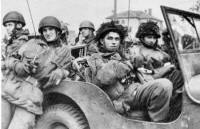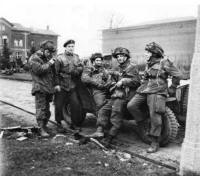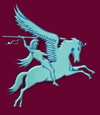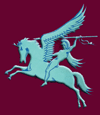[Affiliated Groups] [Events] [Links] [Guestbook] [Contact Us]
6th Airborne Division
Intelligence Corps & FSS History...
Affiliated Groups
9/249 Field Company (Airborne) Royal Engineers
6th Airborne Division:
22nd Independent Parachute Coy
1st Canadian Parachute Battalion
Royal Army Chaplains Department
Polish Independent Carpathian Rifle Brigade (SBSK)
History
Canada’s first airborne unit was formed on the 1st July 1942. With the threat of invasion from a small landing force of either the Japanese on the west coast or German forces on the east coast, an order was made by the Canadian War Cabinet to raise the 1st Canadian Parachute Battalion.
The battalion was to consist of the following
(1) Battalion Headquarters
(2) Company Headquarters
(3) Three Companies: Alpha, Bravo, and Charlie
The battalion would have a total strength of 26 officers and 590 other ranks.
Training
Initially, two groups of potential paratroopers were sent to both the airborne schools of the American and British Armies, both of which already had well-established training programs. The goal was to combine the best aspects of both the American and British systems in an attempt to create the best system of airborne troopers to meet Canada’s needs.
By sending two groups to both the United States and United Kingdom, this would give the Canadians a chance to compare tactics and parachuting techniques of both established training schools, thereby giving them the chance to determine the best methods for the development of the Canadian Parachute Training Wing at Shiloh, Manitoba.
The initial group that traveled to Fort Benning in the United States the unit’s first Commanding Officer, Major H.D. Proctor and included 7 officers and 20 other ranks.
The American system consisted of four stages, each stage one week in duration and teaching a different aspect of airborne training. The focus was on harsh instructing in an attempt to weed out those that were not strong enough to meet the high expectations of the airborne soldier. Any hesitation on the part of the trainee meant immediate dismissal. Training was done using a variety of training equipment including 250 foot high towers and the American T-5 parachute assembly jumping from C-47 Dakota aircraft. Five jumps were required to earn your jump wings. The first casualty of the young Parachute Battalion occurred during their first training jumps when Major Proctor was killed on September 7, 1942 when his rigging lines were severed by a following transport aircraft.
Lt. Col. G.F.P. Bradbrooke took over command of the unit following the death of Major Proctor. He would lead the unit until the end of Operations in Normandy June 14, 1944.
The RAF Ringway group was larger, consisting of 25 officers and 60 other ranks. The British system was vastly different from that of the Americans, only lasting sixteen days. The course was more intensive, focusing on skills necessary in the airborne descent. The system was also different in that the instructors aim was to help along the trainee building up their confidence to complete the task at hand. The trainees also needed to complete seven jumps, not the five in the American system, two from static balloons and five from aircraft.
It was decided to continue Airborne training for Canadian soldiers at Fort Benning while a Canadian parachute training centre was being built at Camp Shiloh, Manitoba. The first class of 54 recruits arrived in Fort Benning to commence their training on October 10, 1942, then another class of 55 candidates every week following.
The training would consist of an extensive 4 week training program including of the following:
Week
One Physical training
Week Two Basic ground and low level tower training
Week Three High tower training (250' parachute descent)
Week Four Parachute Qualification (must complete five
jumps)
Training continued throughout, but there were some problems in recruiting members for the new Parachute Battalion. This was largely due to the fact that many did not want to volunteer for a unit whose primary role was considered to be home defence. This fact was brought home when a call for recruits for a new 2nd Canadian Parachute Battalion (later to become the Canadian Contingent of the 1st Special Service Force) resulted in a large number of soldiers volunteering for this newly formed Battalion, mostly because of the promise that this new unit would see service before the 1st Canadian Parachute Battalion would.
This problem was addressed by requiring all new recruits to go “active” before transfer, thereby allowing the unit to be available for overseas service should it be required.
By March 1943 Canada had its own elite parachute battalion. While completing training, discussions were underway in England about the deployment of this new unit. The Battalion would be part of the Canadian element in the United Kingdom, but under command and equipped as a British parachute battalion, together with the British 3rd Parachute Brigade, 6th Airborne Division, under Brigadier James Hill. The Battalion completed its first jump on May 4, 1943 and by June 1943 the Battalion was preparing for its move to Ringway in England.
In England
The 1st Canadian Parachute Battalion arrived in England in July 1943. Over the next year, the Battalion began training for special airborne operations. A course to familiarize the personnel with British methods, equipment and aircraft, which included getting used to jumping with one parachute instead of two and through a hole in the floor of the aircraft, instead of through a door of a C-47 Dakota used by Americans, was needed. Training included section, platoon, company, and battalion operations with special emphasis placed on weapons and physical training. Training later included combined operations with the British Airborne units and involved tactics, standard operating procedures (SOPs) including brigade and divisional operations.
The unit needed to bring itself up to British training standards in several other areas as well, including qualifying soldiers as heavy machine gun, mortar and anti-tank rifle teams, in wireless operations and intelligence. There were also 50 troopers that were sent for training in the use of the new leg kit bag that gained so much notoriety on the D-Day jumps, both with British and American jumpers.
With several successful exercises under their belt in the following months after their arrival in England, the Battalion made their final preparations for the impending invasion of France. On May 24th 1944 the 1st Canadian Parachute Battalion loaded onto transport in Bulford for their transit camp in the vicinity of Down Ampney. Lt. Col. G.F.P. Bradbrooke collected his Battalion on May 31st 1944 and it was then that they learned their fate.
Operation OVERLORD
Late on June 5th, 1944, they took off with fifty aircraft carrying the troops and equipment heading for France. In addition to the troops' fighting equipment, each man carried a knife, toggle rope, escape kit with French currency, and two 24 ration packs totalling 70 pounds. It should be noted that each paratrooper carried almost 50% more than the acceptable load tables for the invasion aircraft. Most of this additional load was extra ammunition. Battalion orders for the D-Day invasion were to land one hour in advance of the rest of the brigade in order to secure the dropping zone (DZ). Thereafter they are to destroy road bridges over the river Dives and its tributaries at Varaville, then to neutralize the strong points on the cross roads.
In addition, the Canadians were to protect the left (southern) flank of the 9th Battalion during that battalion's attack on the Merville Battery and then seize and hold a position astride the Le Mesnil cross roads, a vital strategic position at the centre of the ridge.
Lt. Col. G.F.P. Bradbrook issued the following orders to his company commanders:
"C Company (Major H.M. MacLeod) was to secure the DZ, destroy the enemy headquarters (HQ), secure the SE corner of the DZ, destroy the radio station at Varaville, and blow the bridge over the Divette stream in Varaville. C Coy would then join the battalion at Le Mesnil cross roads. A Company (Major D. Wilkins) would protect the left flank of 9th Battalion during their attack on the Merville Battery and then cover 9th Battalion's advance to the Le Plein feature. They would seize and hold the Le Mesnil cross roads. B Company (Major C. Fuller) was to destroy the bridge over the river Dives within two hours of landing and deny the area to the enemy until ordered to withdraw to Le Mesnil cross roads."
The paratroopers landed between 0100 and 0130 hours on June 6th 1944. Due to primitive navigation aids, dead reckoning, and anti-aircraft fire, the groups were dispersed over a somewhat wider area than had been anticipated. The dispersal on the drop resulted in the loss of most of the Battalion's heavy equipment along with 80 men who were taken prisoner. The 1st Canadian Parachute Battalion was the first Canadian unit on the ground in France. In spite of sustaining 117 casualties on the first day of battle, all objectives were rapidly attained, a tribute to the hardiness of the men, the excellence of their training, and the thoroughness of the briefing they had received. All objectives were met by mid-day, June 6, 1944. The Battalion continued to fight with great success in France seeing action in the following places: La Vallee Tantot (August 21), La Haie Tondue, Bonneville sur Tonques, Vauville and Beuzeville, where the enemy had again withdrawn leaving the town to the Allies. The Battalion rested there for the next few days until the rest of the Brigade moved into the area.
On August 23rd 1944 Lt. Col. Bradbrooke was appointed to the General Staff at CMHQ in London with Maj. Eadie taking temporary control of the Battalion with Maj. Nicklin on medical leave.
August 26th 1944 saw Maj. General Gale drafting a “Special Order of the Day” thanking his troops for their hard work as the 6 Airborne Division was pulled from the line. During operations in July and August of 1944 the Battalion suffered 14 other ranks killed, 24 wounded. Of the 547 who jumped into Normandy only 197 made the return trip to Bulford when they returned to England on September 7, 1944.
The Ardennes & Holland
On January 2, 1945, the Battalion arrived at the front to aid in pushing the Axis forces back, out of Belgium and the Ardennes. This would be the Battle of the Bulge. 1 Can Para was positioned to complete patrolling (both day and night) and defend against any enemy attempts to infiltrate the area. The battalion's push forward took them through the towns of Aye, Marche, Roy and Bande. The taking of Bande marked the end of the fight for the Bulge and the Battalion's participation in the operation.
The 1st Canadian Parachute Battalion was the only Canadian force to fight in the Ardennes during World War II. The battalion's next major offensive operation was in the Netherlands. Upon arrival, the Battalion moved up to its assigned sector in order to set up defensive positions as patrolling began immediately. The particular type of patrol activity was a favourite among the men, as it required the Battalion to hurry and alarm the enemy by means of patrols, raids, etc., and to establish bridge heads where and when suitable. The Allied Forces had gathered to push south and destroy German resistance in preparation for the Rhine Crossing. The heavy shelling of battalion positions resulted in very few casualties considering the length of time they were there and the strength of the enemy positions. The battalion maintained an active defence as well as considerable patrol activity until its return to the United Kingdom on February 23rd, 1945. On March 7th 1945, the battalion returned from leave to start training for what would be the last major airborne operation of the war, Operation Varsity, the crossing of the Rhine.
Operation VARSITY
Operation PLUNDER was the code name given for the offensive operation which would oversee the invasion of Germany and bring about the end of the Second World War. Airborne forces would be used to seize areas of tactical importance which could be defended until the main Allied Forces could arrive to relieve the paratroopers. This massive airborne/glider assault was codenamed "Operation VARSITY." The 17th Airborne Division (United States) and the 6th Airborne Division (British) objectives would be the Wesel and the Rhine River, to be completed as a combined paratrooper and glider operation. In itself, this was complicated enough. However, added to this was a jump in broad daylight.
3rd Para Brigade, 6th Airborne Division tasks would be the following:
- To clear the DZ and establish a defensive position road at the west end of the DZ.
- To seize the Schnappenburg feature astride the main road running north and south of this feature.
It was reported that Brigadier Hill stated during his briefing:
"Speed and initiative is the order of the day. Risks will be taken. The enemy will be attacked and destroyed wherever he is found. Gentlemen, the artillery and air support is fantastic. Beaten and demoralized, pounded by our artillery and bombers, what would you think, gentlemen, if you saw a horde of ferocious, bloodthirsty paratroopers, bristling with weapons, cascading down from the skies? And you needn't think just because you hear a few stray bullets flying about that some miserable Hun is shooting at you. That is merely a form of egotism. But if by chance you should happen to meet one of these Huns in person, you will treat him gentlemen, with extreme disfavour."
Brigadier Hill assigned to 1st Can Para the seizing and holding of the central area on the western edge of the woods, where there was a main road running north from the Wesel to Emmerich, and to a number of houses. It was believed this area was held by German Paratroopers. C Company would clear the northern part of the woods near the junction of the roads to Rees and Emmerich. Once this area was secure, A Company would advance through the position and seize the houses located near the DZ. B Company would clear the South-Western part of the woods and secure the battalion's flank.
The following is a quote from Robby Robson, 1st Canadian Parachute Battalion:
"At approximately 07:30 hours we emplaned in England and after circling to gather other units that made up the 1st Airborne Army, we headed for the Rhine, where at approximately 10:00 hrs we parachuted under intense fire over the Drop Zone near a town called Wesel. My plane 'The Red Dog' was hit on the port side causing the engine to burst into flame making it quite 'iffy' as we had to jump through the flames of a plane out of control, and as I was second to last in the stick, I became quite anxious about egressing in time. 'The Red Dog' sadly crashed with its valiant crew.
The outcome of this engagement was the defeat of Germany's famous 1st German Parachute Corps in a day and a half. In the following 37 days, we pushed 285 miles, driving the German Army into the Baltic Sea and taking Churchill's prize, the city of Wismar. It was here that the Battalion met the Russians and stopped their advance into Denmark. After linking up with the Russian Army and a day or two celebrating armistice, we were whisked away by trucks from Wismar on the Baltic Sea, to Lübeck where we emplaned for England."
Losses for the operation were comparatively light, indicating that the lessons from Normandy and Arnhem had been learned. However the battalion did lose its commanding officer, Lt. Col. J.A. Nicklin who was killed in action during Operation VARSITY on March 24, 1945. He was found hanging in a tree, boot soles clean, with multiple gun shot wounds to the abdomen. Despite some of the Parachutists being dropped some distance from their landing zone, the Battalion managed to secure its objectives quickly.
Following the death of Lt. Col Nicklin, the last unit Commander was Lt. Col. G.F. Eadie until its disbandment.
Into Germany & Home
On March 26th / 27th 1945, the 1st Canadian Parachute Battalion began to move from Bergerfürth. The higher command realized that the German army was finished. 1 Can Para was ordered to move as deep into Germany as they could, securing as much territory as possible so the advancing Russians would not conquer the whole of Germany.
For the next six weeks the men covered 300 miles, on foot, by bike, by tank and arrived in Wismar Germany, on the Baltic on May 2nd 1945. Here they met the Red Army, the only Canadian unit to do so. On May 8th 1945 the war in Europe ended.
Later in May, the battalion was moved back to their base at Carter Barracks in Bulford. They were able to secure passage on the Isle de France on May 31st 1945. The men arrived in Halifax on the 21st June 1945 to a hero's welcome. They were the first Canadian unit to be repatriated. From here leave was given and the men returned to their families. They were reassembled at Camp Niagara in Niagara-on-the-Lake, Ontario on August 31st 1945. Each man was offered the choice of discharge or service in the war in the Pacific. Japan surrendered in August 1945 so there would be no men from 1 Can Para fighting in the Pacific.
On September 30th 1945 the 1st Canadian Parachute Battalion was officially disbanded.
Major H. D. Proctor
1st Commanding Officer
Lt. Col. G.F.P. Bradbrooke
Took command after the death of Maj. Proctor
Lt. Col.
J.A. Nicklin
Took over as the third commanding officer of the battalion
Lt. Col.
G.F. Eadie
Took over from Lt. Col. Nicklin after his death and was the last
commanding officer of the battalion up to its disbandment in 1945.
Brigadier James Hill briefs officers of the battalion prior to D-Day
Into Germany, April 1945
Training Drop
Ready to emplane prior to D-Day
Ardennes, 1945
Germany, April 1945
Ready to emplane,
5 June 1944
